- Home
- Newt Gingrich
Understanding Trump Page 14
Understanding Trump Read online
Page 14
We are one nation—and their pain is our pain. Their dreams are our dreams; and their success will be our success. We share one heart, one home, and one glorious destiny.
Trump has felt the pulse of the country since before he announced his candidacy, and he clearly understands the pain and heartache of Americans. Despite the media’s portrayal, President Trump actually delivered a tremendously uplifting speech. When historians study it in the future, they will describe it as an incredibly positive and visionary speech that helped set our nation on a bold new course. And their assessments will be supported by this quote:
The time for empty talk is over. Now arrives the hour of action. Do not let anyone tell you it cannot be done. No challenge can match the heart and fight and spirit of America. We will not fail. Our country will thrive and prosper again.
We stand at the birth of a new millennium, ready to unlock the mysteries of space, to free the earth from the miseries of disease, and to harness the energies, industries, and technologies of tomorrow. A new national pride will stir our souls, lift our sights, and heal our divisions.
This is something President John F. Kennedy might have said to rally America during the Cold War. It is optimistic, positive, and challenges Americans to make the next great discoveries in science and technology to help make a dramatically better future for the United States. This quote particularly excites me, because it shows the president’s desire to bring Americans together to develop a totally new approach to accelerate science in curing disease, getting into space, creating jobs, and strengthening national security.
So, this was not a divisive speech. This was a speech that talks about bringing us together, strengthening our position in the world, and creating a better future. Throughout the address, the president focused on the nation as a whole—not Republicans or Democrats.
In fact, I was struck with President Trump’s deliberate use of “we”—since we just had a president who found it hard to get through a sentence without the word “I.” Sean Hannity told me once he counted seventy-nine uses of “I” in one of President Obama’s speeches. But Trump, whom the media often caricatures as focused on himself, opened his first speech as president by saying, “We, the citizens of America, are now joined in a great national effort to rebuild our country and restore its promise for all of our people.”
Notice how he continues with this language: “Together, we will determine the course of America and the world for years to come.”
Here he showed his understanding that as president of the United States, he ultimately, inevitably, is a leader for the planet. We’re too big an economy, we’re too strong militarily, we have too great a dominance in culture to think just of ourselves. While President Trump wants to put America first, he wants to put America first within a world system in which he’s deeply aware. Here he recognizes we are tied to the entire planet.
What he said next spoke directly to his unshakable resolve: “We will face challenges. We will confront hardships. But we will get the job done.”
This line reminds me of a conversation I had with President Trump during one of the low points of the campaign. It was October, and most polls were showing Clinton with a several-point lead. Then-candidate Trump told me, “Remember, I will win.” Even at one of his very lowest moments, he was determined. He didn’t yet know how he would win. The campaign had not yet finalized its strategy to fight for Pennsylvania, Michigan, and Wisconsin, but Trump knew his success was a question of “how,” not “if.”
This is a deep part of Trump’s personality, one that he wants to imbue on the entire country. Trump doesn’t want Americans to talk about disabilities, he wants to talk about capabilities. For instance, Trump sees the success of the Wounded Warrior Project and compares that with our Social Security disabilities program. He wants to change the culture of this population. It’s not about what America’s disabled people can’t do, it’s about what they can do. Trump thinks about how we can train people to provide for themselves and their families despite their hardships.
In the same way, when he looks at the welfare and food stamps systems, he doesn’t ask how to put more money into those programs to support more people, he asks how we can help these people find good-paying jobs. He asks how the president or Congress can make it easier and more affordable for small businesses to hire people.
Along those lines, I had a conversation with Colorado senator Cory Gardner, who pointed out that there are about 200,000 businesses in Colorado. If each business was able to hire just one more person, you could add 200,000 people to the workforce in Colorado. That would be 200,000 more people paying taxes—200,000 people taking care of their families, homes, and neighborhoods. This thinking is perfectly in line with the Trump mind-set: look at problems and turn them into opportunities.
In closing, Trump said, “Together, we will make America strong again. We will make America wealthy again. We will make America proud again. We will make America safe again. And yes, together we will make America great again.”
With his inaugural address, Trump built on his “Make America Great Again” slogan, to reinforce that he wants America to be great for all Americans. It was a very conscious statement by Trump at the very beginning of his presidency, that his commitment is to all Americans.
This inclusive, inspirational message was the theme that allowed President Trump to succeed. And if President Trump keeps his focus on his effort to unify and strengthen America, he could easily build an eight-year administration around it—and America would become a much better place. It will be fascinating to watch how he directs and trains the people around him, because he has a vision of how to get this done.
Trump’s inaugural described a fundamentally different direction for America by somebody who has earned the right to tell us what he honestly thinks. I don’t know of anyone else who could have come out of nowhere and beaten sixteen Republican candidates. I don’t know anyone else who could have taken on the entire elite media and beaten them. I don’t know of any other candidate who could have taken on a billion-dollar Hillary Clinton campaign and won. Occasionally people tell me some other Republican would have won by a bigger margin. Baloney.
I’ve been through a lot of campaigns in my career. The 2016 victory took force of will. It took a willingness to confront his opponents. It took a willingness to be tough. I don’t know of any other candidate who could have done it the way he did it. He will need to bring that same optimism, resolve, and confidence to the presidency to succeed in enacting his revolutionary agenda.
A HISTORICAL PERSPECTIVE
After President Trump’s inaugural ceremony, I saw a parallel between Trump’s inaugural speech and President Lincoln’s 1861 inaugural speech. Both were clear statements of nonnegotiable principles to bitter opposition, both had survived some of the most divisive campaigns in American history, and both appealed to patriotism.
I wrote Dr. Allen Guelzo for his perspective. Guelzo is the Henry R. Luce Professor of the Civil War Era and the director of the Civil War Era Studies Program at Gettysburg College. He is one of the great students of Lincoln and one of the great historians in the country. Frankly, I expected Allen to respond, “Have you just lost your mind!?”
But he didn’t.
Guelzo responded:
Your points are entirely on the mark. I have done a quick comparative outline of both inaugural addresses, and while the existential situation of the two are different, on March 4th, 1861, Lincoln was already facing the secession of seven states, the official creation of a Confederate States of America, and demands for the surrender of federal property, there is this common thread, the sovereignty of the people. Lincoln used that principle to deny that one part of the nation, the seven seceding states, could break up the union without the consent of the American people, as well as denying that one branch of the government, the Supreme Court, could overrule the American people’s will.
This was enough to make me feel better. But Guelzo continued.
/>
Trump invokes that principle. To deny that a federal bureaucracy can enrich and empower itself at the expense of the people, as well as denying that identity enclaves can overrule the fundamental unity of the American people.
Guelzo went on to point out that Lincoln’s inaugural was a denial of radical intent, saying that the application of fugitive slave law must incorporate due process. He said it highlighted that secession was an impossibility, and that the Union was permanent. Guelzo said Lincoln pointed out that his administration threatened no one’s rights, and that the people—not the Supreme Court—are the ultimate arbiters in America.
Finally, he said Lincoln held that the nation belongs to the people who inhabit it—rightly pointing out that this remark presaged the Gettysburg Address, in which Lincoln spoke about government “of the people, by the people, and for the people.”
Trump’s inaugural held many of the same themes, according to Guelzo.
He outlined Trump’s speech as one that described people reclaiming government from the establishment, and repudiating the establishment for failing the citizens and enriching others. He said Trump reaffirmed that decisions would be based on the priority of American interests, and that the government would lead by example but not impose ideals on the people. And Trump stressed that American unity is based on patriotism, according to Guelzo.
Dr. Guelzo went on to say:
There is one other point of relationship too, and that is the mix of confrontation and conciliation in Lincoln, without any hint of compromise. Lincoln appealed to the better angels of all Americans to promote unity, but along with that, he refused to endorse any compromise, short of a popularly endorsed Constitutional amendment. He, also, and this is more subtle, insisted that the application of the fugitive slave law be done with full respect for due process. This was a carefully calculated rebuke to Chief Justice Taney, sitting right behind him, who had insisted in Dred Scott versus Sanford that Blacks could not be citizens, and, therefore, could not claim due process rights.
Guelzo’s assessment confirmed my own—that the Left and the media were completely off base, and that we can always learn from history no matter how unique the present seems to be. Guelzo had more to say, but I have included his additional thoughts in the next chapter.
Throughout the campaign, and in the early days of his presidency, I wondered why President Trump never backed off from a fight, or let even the most minor criticism slide. Anytime a pundit or a political opponent would cast him in a negative light, Trump would immediately respond—even if that brought more attention to the negative comment. Then, the answer became clear at one of his first presidential press conferences in February. As he stood for more than an hour speaking off the cuff—and voicing his criticism—to the press, he said “I love this, I’m having a good time doing it.” I realized he likes the competition. That’s good, because his opponents are going to fight him at every turn.
CHAPTER NINE
THE PERMANENT OPPOSITION
With Republican majorities in the House of Representatives and the Senate, President Trump is in a great position to enact policies that will dramatically improve our country. But he will face constant resistance from those in the permanent opposition. All the groups that opposed him during the campaign have and will continue to do so. The president must remember that this is just the start.
Every day of President Trump’s administration, Washington inertia, the bureaucracy, the media—every fragment of the old order—is going to try to stop this badly needed political revolution. There’s no doubt, Trump is going to find himself in a permanent fight.
President Trump is not the first president to lead a divided nation. The 1796 and 1800 elections between Thomas Jefferson and John Adams were incredibly close, divisive elections. In 1876, President Rutherford B. Hayes defeated Samuel Tilden by one electoral vote.1 And a modern example is the 2000 election of George W. Bush, in which he defeated former vice president Al Gore 271 to 266.
However, the ideological divide now is more intense than it has been in over a century. Dennis Prager suggested in an op-ed he wrote for National Review in January 2017 that the political and ideological differences now amount to a second American Civil War.
Prager argues that today’s divide is unique. First, he draws a distinction between liberalism and the Left. While liberals and conservatives historically have found common ground as Americans, the modern Left rejects American ideals and has abandoned the core principles of liberalism.
Liberalism—which was anti-Left, pro-American, and deeply committed to the Judeo-Christian foundations of America, regarded the melting pot as the American ideal, fought for free speech for its opponents, regarded Western civilization as the greatest moral and artistic human achievement, and viewed the celebration of racial identity as racism—is now affirmed almost exclusively on the right and among a handful of people who don’t call themselves conservative.
The Left, however, is opposed to every one of those core principles of liberalism.
Like the Left in every other country, the Left in America sees America as essentially a racist, xenophobic, colonialist, imperialist, war-mongering, money-worshipping, moronically religious nation.
To the modern Left, Prager says that the traditional melting pot on which American identity was founded, “is regarded as nothing more than an anti-black, anti-Muslim, anti-Hispanic meme.” Where liberalism protects free speech for all, today’s Left freely labels dissenting opinions that promote traditional American principles as “hate speech.”
And Prager says the Left so far is winning the war by injecting its views into students. Children in school, he says, learn that “virtually every war America fought [was] imperialist and immoral,” that the free market is actually a system of oppression, that all the troubles that affect African Americans are the fault of racist white people, and that the “nuclear-family ideal is inherently misogynistic and homophobic.”
“That is how it has been able to take over schools—from elementary schools to high schools to the universities—and indoctrinate America’s young people; how it has taken over nearly all the news media; and how it has taken over the entertainment media,” Prager wrote.
Conservatives, he said are losing because they aren’t fighting back with equal measure.
“Name a Republican politician who has run against the Left, as opposed to running solely against his or her Democratic opponent. And nearly all American conservatives, people who are proud of America and affirm its basic tenets, readily send their children to schools that indoctrinate their children against everything the parents hold precious. A mere handful protest when their child’s teacher ceases calling their son a boy or their daughter a girl, or makes ‘slave owner’ the defining characteristic of the Founding Fathers,” Prager wrote.
Now, for perspective, 620,000 soldiers died during the American Civil War, and approximately 400,000 were missing or captured. Countless other noncombatants also lost their lives. It was the bloodiest, gravest conflict in our history. Casualties from all our other wars combined did not meet the Civil War’s death toll until the Vietnam War.2 I don’t think our current political fray will devolve to that.
But Prager does have a point that the last time our country was this ideologically divided was in 1861. The Left was dealt a strong blow by the 2016 election. It was stunned for a moment but has recovered, ready to continue its ideological war. The following chapter looks at where the Left’s legions are—and how President Trump should address them.
TWO AMERICAS
There is no doubt, the political gap has widened in American politics. Polls by Pew Research Center show the ideological American middle has largely evaporated, as Democrats have shifted heavily to the Left, and Republicans have become slightly more conservative over the last twenty-one years.3
In 1994, the research center reported that most politically engaged people in America had centrist views. According to Pew, 48 percent of politically active D
emocrats had “mixed” views on a five-category liberal-conservative spectrum. At the same time, 35 percent of politically engaged Republicans were in the middle. Most of the general population—those who did not identify as “politically engaged”—were also in the middle. Fifty-three percent of Democrats and 44 percent of Republicans were in the political center.
By 2011, the percentage of people who said they had mixed political views had dropped to 35 percent for politically active Democrats and 28 percent for their Republican counterparts. In fact, an equal percentage of Democrats at the time described their views as “mixed” and “mostly liberal,” and most Republicans, 39 percent, had shifted to “mostly conservative.” Meanwhile, the general population remained centrist at 42 percent and 40 percent for Democrats and Republicans respectively.
Since then, Pew reports that polarization among politically active Americans has widened greatly. As of 2015, the research center reports that only 25 percent of politically savvy Democrats and Republicans have mostly centrist views.
The polls track Democrats on a hard-left trajectory since 1994. Most politically active Democrats polled—42 percent—are now “consistently liberal”—which is as far left as the spectrum goes. This is significant, because in 1994 only 8 percent of politically active Democrats claimed to be on the far left wing. That is a 34-percentage-point shift that speaks to how drastically the activist base of the Democratic Party has changed in two decades. It also shows how out of touch left-wing politics are even among Democrats. Among all current Democrats polled—not just those who are highly engaged—Pew found that 34 percent are centrists compared with 27 percent who identify as being far left.

 1945
1945 Collusion
Collusion Trump's America
Trump's America Shakedown
Shakedown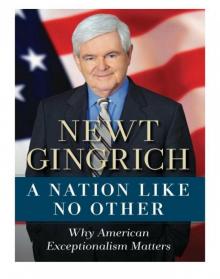 A Nation Like No Other
A Nation Like No Other To Try Men's Souls - George Washington 1
To Try Men's Souls - George Washington 1 Pearl Harbor: A Novel of December 8th
Pearl Harbor: A Novel of December 8th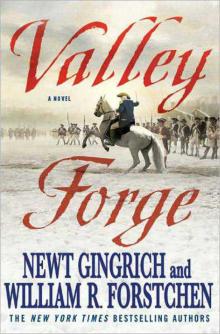 Valley Forge: George Washington and the Crucible of Victory
Valley Forge: George Washington and the Crucible of Victory To Save America
To Save America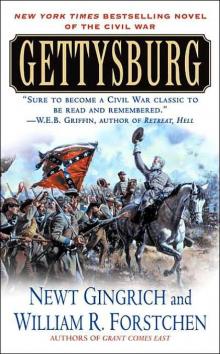 Grant Comes East cw-2
Grant Comes East cw-2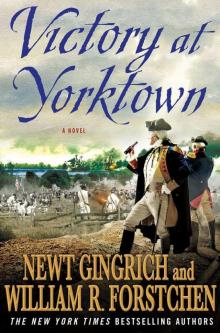 Victory at Yorktown: A Novel
Victory at Yorktown: A Novel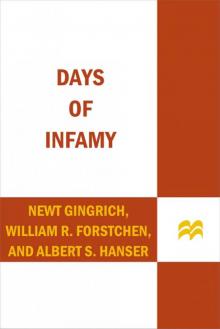 Days of Infamy
Days of Infamy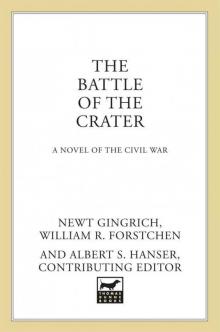 The Battle of the Crater: A Novel (George Washington Series)
The Battle of the Crater: A Novel (George Washington Series)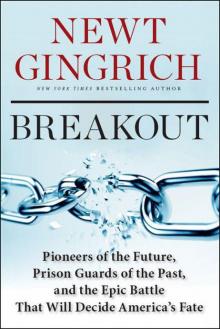 Breakout: Pioneers of the Future, Prison Guards of the Past, and the Epic Battle That Will Decide America's Fate
Breakout: Pioneers of the Future, Prison Guards of the Past, and the Epic Battle That Will Decide America's Fate Pearl Harbour and Days of Infamy
Pearl Harbour and Days of Infamy Pearl Harbour - A novel of December 8th
Pearl Harbour - A novel of December 8th Understanding Trump
Understanding Trump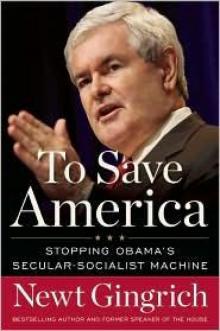 To Save America: Abolishing Obama's Socialist State and Restoring Our Unique American Way
To Save America: Abolishing Obama's Socialist State and Restoring Our Unique American Way